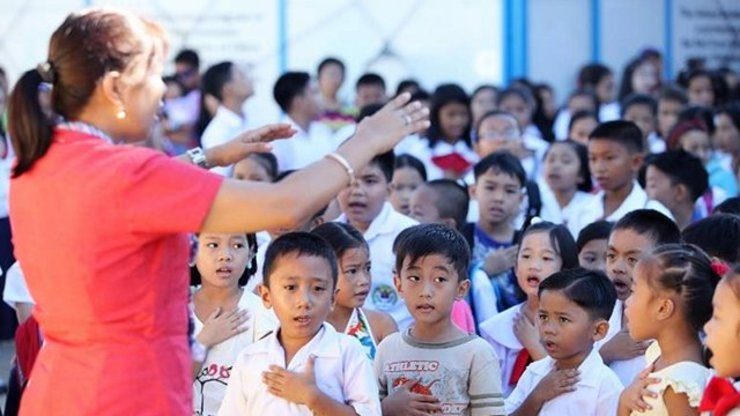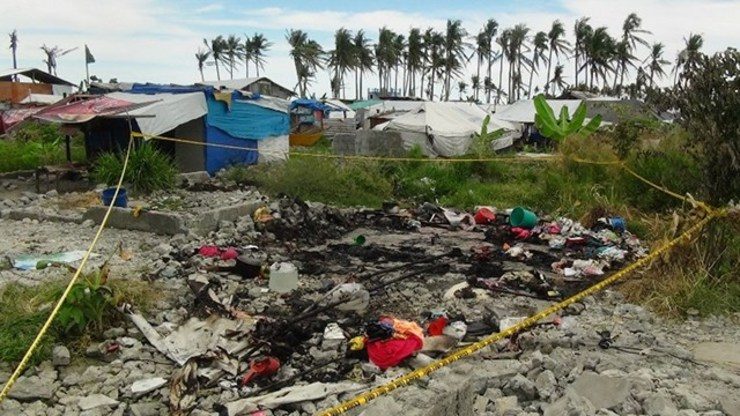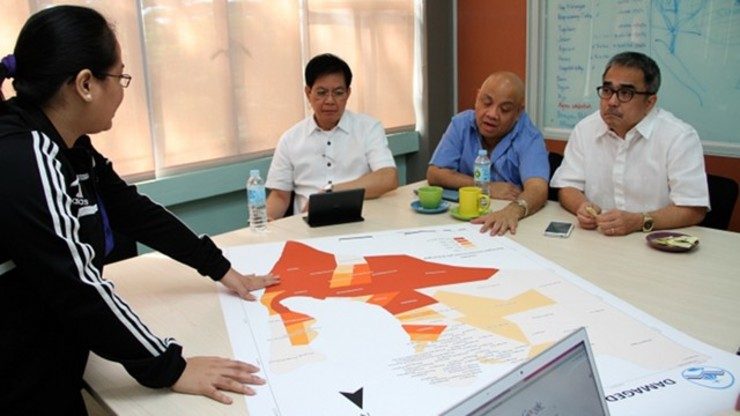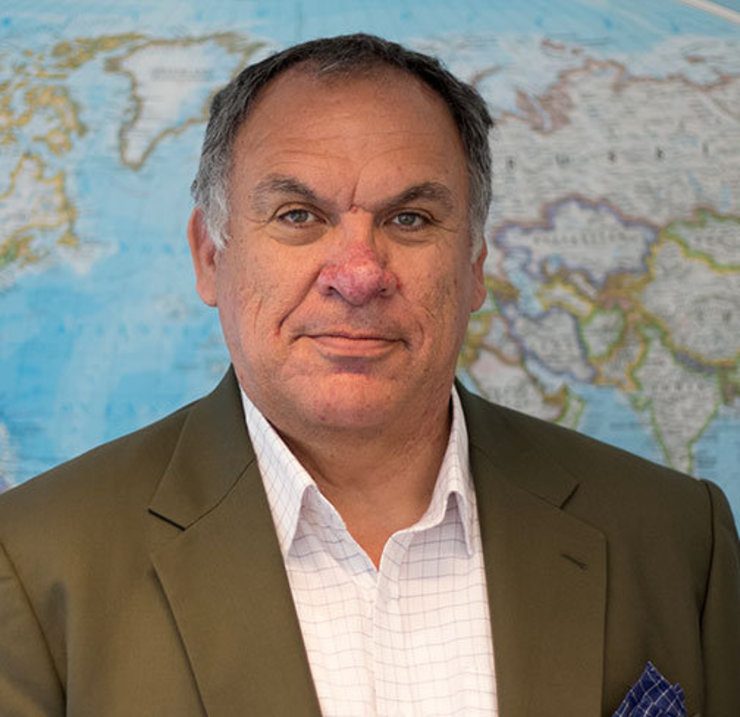SUMMARY
This is AI generated summarization, which may have errors. For context, always refer to the full article.

UNITED NATIONS – Days after Super Typhoon Yolanda (Haiyan) devastated central Philippines in November 2013, white United Nations tents stood as a symbol of the massive global response to the disaster.
Nearly a year later, the tattered canvas in Tacloban City showed a major challenge in the rehabilitation phase: permanent shelter.
The world’s most powerful typhoon to hit land brought the Visayas to its knees, but it also caused an outpouring of aid from the international community. With the government overwhelmed, countries and groups across continents sent soldiers, workers, goods, money, and the world’s largest ships and planes to help.
After the response shifted from relief to rehabilitation one year later, global organizations now see themselves playing a smaller role. While they remain committed to recovery work, UN officials and humanitarian organizations told Rappler that the government must take the lead in scaling and speeding up aid.
In interviews from Manila, New York, and Geneva, experts identified housing and livelihood as common gaps after global disasters of Yolanda’s magnitude. Still, they said that temporary shelter must not come at the expense of victims’ dignity.
“Living in a tent for a week, for you and me, on a holiday, we can cope with that. But living in a tent for months while you’re trying to send your kids to school or to prepare for work is a very huge demand for anyone,” said Alfredo Zamudio, director of the Geneva-based Internal Displacement Monitoring Centre (IDMC).

‘Bureaucracy in the way’
When Yolanda wiped out poor communities in Eastern Visayas on November 8, 2013, even UN agencies and relief workers used to dealing with huge global calamities were surprised with the extent of the destruction.
The government recorded 6,300 deaths and damages worth P89 billion ($1.99 million). In a report released in September, IDMC said that Yolanda caused the largest displacement in the world in 2013: 4.1 million people. That figure is a million more than those displaced in Africa, the Americas, Europe, and Oceania combined.
The UN Development Programme (UNDP) and the UN Children’s Fund (UNICEF) are two agencies on the ground since the first days after the typhoon. Key officials said, compared to the handling of other high-level emergencies in countries like Iraq, Syria, and South Sudan, the Aquino administration has been “competent.”
Haoliang Xu, UNDP regional director for Asia and the Pacific, said he also observed families living in temporary shelter a year after the Pakistan earthquake in 2005 left 86,000 dead.
“We need to recognize the enormity of this disaster. When we talk about Katrina, the speed of the hurricane was about 200 kilometers per hour. Haiyan was over 300 kilometers. Typhoon Sandy that hit the New York area was about 130. So if you put it in perspective, it is difficult for any government to deal with this kind of disaster,” Xu said in an interview in his Manhattan office.
UNICEF Representative to the Philippines Lotta Sylwander cited improvements in children’s welfare, like sending most children in the Yolanda-hit areas back to school and having rare cases of acute malnutrition. UNICEF has been working with the government in providing unconditional cash transfers and psychosocial support.
Still, Sylwander said that the government’s slow release of funds is problematic.
“Government itself has not been able to release money from the national to the local government units, so if we have been partnering with government on an issue, we’ve done what we’ve agreed to do but government has found it difficult to put in their part because their money in the bureaucracy has been in the way,” she said via Skype from Manila.
President Benigno Aquino III only approved the rehabilitation plan days before Yolanda’s first anniversary. Rehabilitation Secretary Panfilo Lacson attributed the 9-month delay in the submission of the required post-disaster needs assessment to red tape, and the lack of cooperation of some national agencies and local governments.

‘A stressful environment’
The blame game and disputes that emerged in the days after Yolanda now extend to policy decisions, like land and resettlement. For example, Tacloban City Mayor Alfred Romualdez said that the national government should have used elevation, not distance from the sea, as the standard for so-called no-build zones.
The politics is obvious even to international players.
“There are local governments units where the mayor is not on the present government’s side and those mayors, of course, don’t want the national government to be seen to be doing things and so there are delays on that. It’s complicated,” said Sylwander.
The UNICEF representative said that these decisions and delays have real effects on families, especially children, who become vulnerable to domestic violence and sexual abuse in cramped temporary shelters. “It’s a stressful environment.”
IDMC’s Zamudio said that it usually takes years for countries to rebuild permanent shelter because the availability of land and housing is “the biggest threat to any displaced person throughout the world.”
Aquino admitted as much when he said that the government has enough funds and materials but lacks land for reconstruction. In worst-hit Tacloban, Romualdez said only 400 out of 14,500 required houses will be built one year after Yolanda.
Zamudio and Xu said that the international community has a wealth of experience and expertise to help the government make sound decisions on land and no-build zones. Yet ultimately, coordination between the national and local governments will address these complex issues.
In the meantime, government officials must make the long-term plan clear to displaced families, and improve the quality of temporary dwellings.
“People need to have a dignified life while durable solutions are made. You need privacy, dignity. You cannot leave people in a limbo while you say, ‘Your land is not safe anymore. We won’t pay you anything and you need to be somewhere else.’ You need to have a system for this,” Zamudio said.

‘The mayor is king’
Experts said that government has to craft and implement better policies to reduce losses from future disasters.
The Philippines is the world’s third most disaster-prone country, based on the World Disaster Report 2012, suffering from 20 typhoons a year. IDMC said that geographic location is not the only factor that makes the country high-risk but also having many poor people in hazardous areas, and a “weak legal and political infrastructure for urban governance and accountability.”
“When you don’t apply building codes and when you don’t apply good land use plans, and you know that you have a continuous amount of hazards coming towards that area, not solving those issues will put poor, vulnerable people in the same situation over and over again,” Zamudio said.
To address this, IDMC has been engaging with the Philippine government to support the passage of a law protecting the rights of internally displaced people (IDPs), and to push for effective implementation of the Disaster Risk Reduction and Management Act, which it calls “a very good law.”
UNDP is in turn providing the government advice on building codes, land use and pilot evacuation centers. UNICEF is creating a cloud-based civil registration system so that documents like birth certificates will no longer be washed away in floods.
The UN agencies commended the creation of Lacson’s Office of the Presidential Assistant for Rehabilitation and Recovery (OPARR) but said it must not be dismantled after Yolanda. They echoed calls for a permanent disaster agency.
UNICEF’s Sylwander said, “We don’t only have man-made, conflict-related events. We also have all the climate change-related ones plus earthquakes and volcanoes so what more can you ask for?”
The UN official highlighted the role of local government units (LGUs) in disaster risk reduction. She cited Albay province and Yolanda-hit Guiuan, Eastern Samar as models.
“If you find ways to prevent, respond to those who are already affected, and you document that your policies have worked, you will be leading in Asia in this.”
“They say in the Philippines, the mayor is king and I do believe that’s true. The mayor can make a huge difference in preparing the community because every LGU is different. Guiuan is based on a very thin peninsula and very close to the sea. It’s very different from an LGU like Palo which has both mountains and beach,” Sylwander said.
Government has biggest purse
International aid organizations and the UN noted that it was easier to get funding for Yolanda and other natural disasters compared to conflict or man-made and political crises.
The UN’s funding appeal for Yolanda drew $468 million or 60.3% of the requested $776 million so far. UNICEF exceeded its own appeal of $119 million, getting $156 million for its Strategic Response Plan.
“It’s sort of the CNN effect which really makes the difference. In this case, it was so visible and people could speak straight into the cameras and TV, and everyone was touched and shocked. It had a huge impact,” Sylwander said.
Still, UNDP’s Xu said that the government holds the biggest amount of money, with its rehabilitation plan worth P167 billion ($3.7 billion). Recently cited as the most transparent aid group in the world, UNDP is helping the government create a website that will finally track the flow and use of funds.
Known as the Electronic Management Platform: Accountability and Transparency Hub for Yolanda (EMPATHY), the website will be launched in November. The initial website that recorded foreign aid called FAITH was inaccessible as of posting time.
The Philippines ranks 94th out of 177 countries in Transparency International’s Corruption Perceptions Index. The Commission on Audit also recently reported that food packs were wasted due to improper storage.
“Many people ask, ‘How will this large amount of money not only from donors but from the government, be used?’ UNDP is working with the government very closely to develop this electronic information management system for all the money that government will spend in its recovery process,” Xu said.
Can PH be leader in Asia?
Despite daunting challenges in the Philippines’ biggest reconstruction effort since World War II, experts said that government has an opportunity to take on a leadership role in Asia if it does the work well.
“Because the problems you are facing are so large, if you find ways to prevent and respond, that will be an example. You will help other nations which are victims of smaller hazards learn what works for you,” Zamudio said.
While the rehabilitation plan sets a 6-year timetable, Xu said that the government should speed up the recovery. After all, it now has enough resources and assistance to do so.
“The world is behind you,” said UN Secretary-General Ban Ki-Moon when he visited Tacloban last year. It’s time the Philippines surges ahead. – Rappler.com
For Rappler’s full coverage of the 1st anniversary of Super Typhoon Yolanda (Haiyan), go to this page.
Add a comment
How does this make you feel?

There are no comments yet. Add your comment to start the conversation.